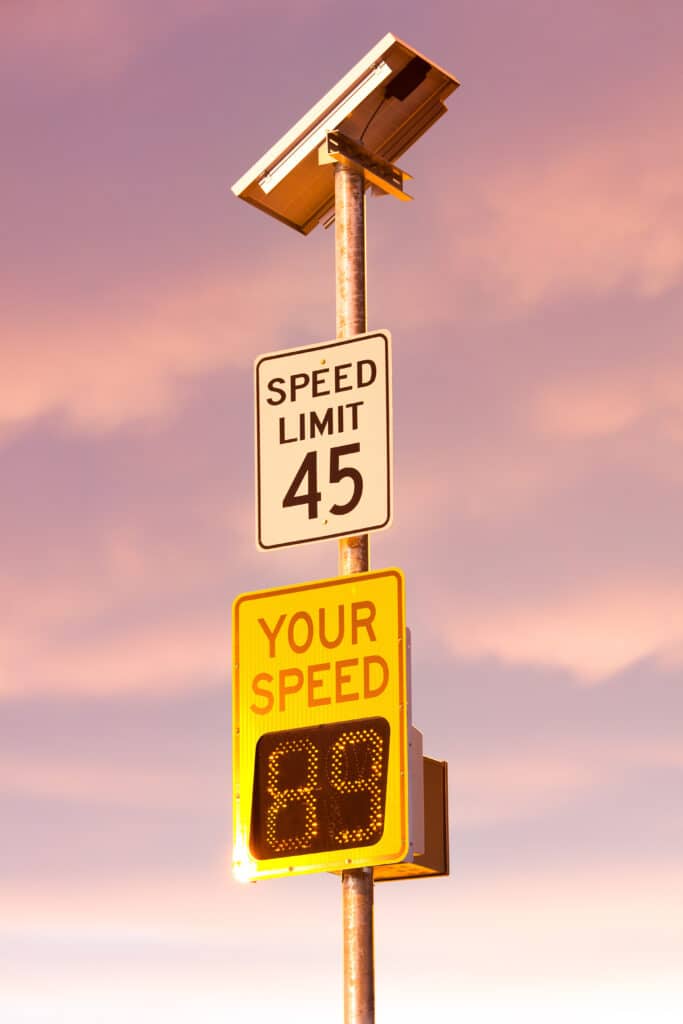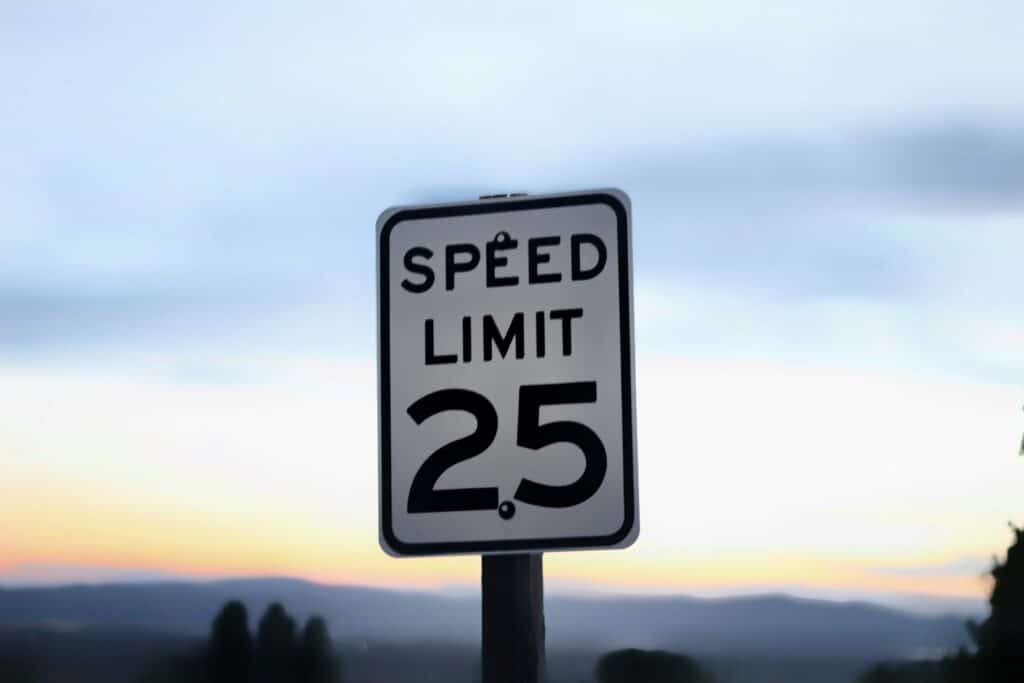
Speed calming signs play an important role in protecting road users. Whether you’re an individual seeking a solution for your street or a community leader looking to enhance safety measures, this post will guide you to implement these signs effectively.
Let’s explore the different sign types, benefits, and installation tips.
Understanding Speed Calming Signs
In the world of traffic management, speed calming signs play a pivotal role in curbing excessive speeds and fostering safer roadways. These signs come in various types, each serving a unique purpose in addressing speeding and other traffic-related concerns.
What Are Speed Calming Signs?
Designed to communicate specific messages to drivers, speed calming signs help influence drivers to adhere to speed limits. Unlike traditional speed limit signs, speed calming signs aim to actively slow down traffic in designated areas, contributing to overall road safety.
The Different Types of Speed-Calming Signs

There are various types of speed calming signs used to help mitigate speeding traffic.
Here are some of the most common types:
- Speed Limit Signs: These signs set the maximum allowed speed for a particular stretch of road, creating a clear standard for drivers to follow.
- Speed Hump Signs: Warning drivers of upcoming speed humps, these signs prepare motorists for changes in road conditions, encouraging them to reduce speed.
- Radar Speed Signs: This traffic sign uses radar technology to display real-time vehicle speeds, acting as a visual reminder for drivers to adjust their speed accordingly.
- Variable Message Signs (VMS): These signs are dynamic in nature and can display variable speed limits based on specific conditions or events, offering flexibility in traffic management.
Understanding the differences between each type of speed calming sign will enable you to choose the most effective option for your community or road safety needs.
What Are the Benefits of Speed Calming Signs?
Speed calming signs are powerful tools that come with numerous benefits for both communities and individuals. Some of the main benefits include improved road safety, a reduction in traffic accidents and injuries, and enhanced community livability.
Improved Road Safety
One of the primary benefits of speed calming signs is the improvement of road safety. By signaling drivers to reduce their speed, these signs help mitigate the risk of accidents, which in turn promotes a safer road environment for pedestrians, cyclists, and motorists.
Reduction in Traffic Accidents & Injuries
A proactive approach to properly implementing speed calming signs significantly contributes to a reduction of traffic accidents and injuries.
Enhanced Community Livability
Speed calming signs have improved quieter streets, and diminished traffic-related stress, overall elevating the quality of life and well-being of residents.
Factors to Consider When Choosing and Installing Speed Calming Signs
To effectively address speeding traffic in a specific location you’ll need to consider the following factors to make an informed decision about which speed calming signs to implement.
Location-Specific Considerations
- Traffic Patterns: Analyze the traffic flow in the area to determine the most suitable type of speed calming sign.
- Residential vs. Commercial Areas: Consider the nature of the surroundings; residential areas may benefit from different signs than busy commercial zones.
- Strategic Locations: Install signs strategically, such as near schools, residential areas, or high-risk zones.
Speed Limits and Regulations
- Legal Requirements: Ensure compliance with local speed regulations and legal requirements when choosing a speed calming sign.
- Targeted Speed Reduction: Determine the desired speed reduction and select a sign that aligns with these objectives.
Visibility and Effectiveness
- Visibility Factors: Assess the visibility of the chosen location to determine the most effective sign for capturing drivers’ attention.
Effectiveness in Behavior Change: Consider the psychological impact of different signs on driver behavior.
Potential Challenges and Solutions
- Obstacles: Identify potential obstacles or challenges during installation, such as existing infrastructure or landscaping.
- Community Engagement: Involve the local community to address concerns or garner support for the installation.
Choose Interwest Safety to Mitigate Speeding Traffic
In your quest to create safer roads and communities by mitigating speeding traffic, finding the right supplier is significant. At Interwest Safety we understand the importance of providing high-quality traffic safety equipment and signs. With fast and dependable service, visit Interwest Safety to meet your road project needs.






